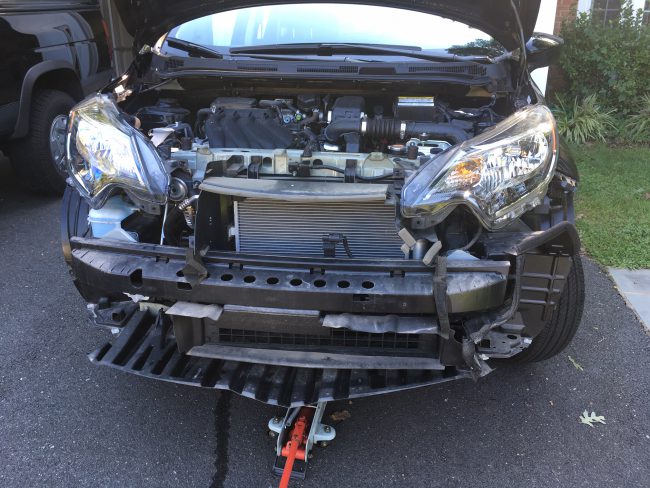
Despite the old adage, “If it works, don’t fix it,” I have never been able to keep my hands off of things that aren’t broken. That’s bit me in the ass more times than I’d like to admit, something I was well aware of when I decided to “improve” our new Nissan Versa. I’m not sure if that decision makes me fearless or just stupid, but whichever it is I went in anyway. I guess it’s time to talk about what happened.
I mentioned in my initial write-up that I was unhappy that the Note SV doesn’t come with a built in navigation system and that I was shocked, yes shocked, that it’s not available as a factory or dealer add-on, either. It’s probably a sign that I’m getting old but, despite having used them to navigate around Japan for the last three years, the idea of using our smartphones’ navigation apps just didn’t occur to me. Once the members of this site (should we start calling you the Besters and the Brightesters?) set me straight, however, I realized I was going to need some sort of mount.
My last foray into the world of cell phone mounts resulted in the purchase of a couple of spring-loaded armatures that stuck, via suction cup, to a plastic pad I glued to my dash. That worked well enough, but I absolutely hate sticking things to the inside of my cars so, this time, I decided to try something different. The solution I arrived at was the Veckle CD slot magnetic car phone holder, which I got through Amazon for just for just $10.99. It may not be an option if you listen to a lot of CDs, but that’s not something I do much anymore so the Veckle works well for our purposes. I simply slipped it in, turned the plastic knob that secured it into place and that was it. Total install time, about 5 minutes when you include sticking the flat magnets that were thoughtfully included to the back of your phone’s case. The only point of caution I can advise you on is not twisting the knob that secures the mount into position so tightly that it cracks the fascia on the stereo.
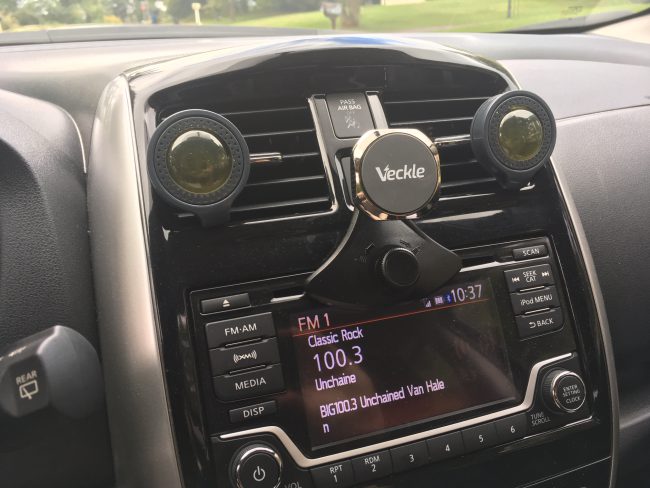
The next addition was something that I installed in the Town and Country when we moved to Japan – a Dash Camera. Although we have never been called upon to use it as evidence for any sort of accident, I enjoy the feeling of security it provides and thought having one in the new car would be a good idea as well. Since I liked the one we have, I bought another of the exact same model, a Spy Tec A119, through Amazon for $79.95. The basic installation was simple, I added a 32 GB Micro SDHC memory card and stuck it to the windshield. Routing the wires took a little more time because I wanted to make the install as clean as possible. With that in mind, I tucked the power cable into the leading edge of the headliner and ran it over to the passenger side door where I slipped it in under the rubber weatherstripping. I followed the edge of the door down to the bottom of the dash, and then tucked the wire up and out of sight under the glove box until I reached a point where it could be plugged into the accessory power outlet via a double USB adapter that can serve both the camera and the phone.
The result is clean and simple and setting up the A119 was easy. Because the Note’s accessory power outlet is switched, the camera turns on and off with the car. On startup, it makes a noise to let me know it has powered on and gives me a 15 second look at what it’s seeing via a small display on the unit’s back. When the screensaver kicks in, the screen goes dark and the unit is absolutely out of sight, out of mind. Spy Tec’s literature says the camera records at 60 frames per second at 1440p via a wide angle lens, which sounds impressive but I have no real idea what that means. What I can say is that when I have pulled out the memory card and played the video on my computer, the video is crisp, clean and very fluid. Total install time, about 45 minutes when I include the time it took to run the wire exactly the way I wanted, and maybe another 15 minutes playing around with the menu to get the camera dialed in.
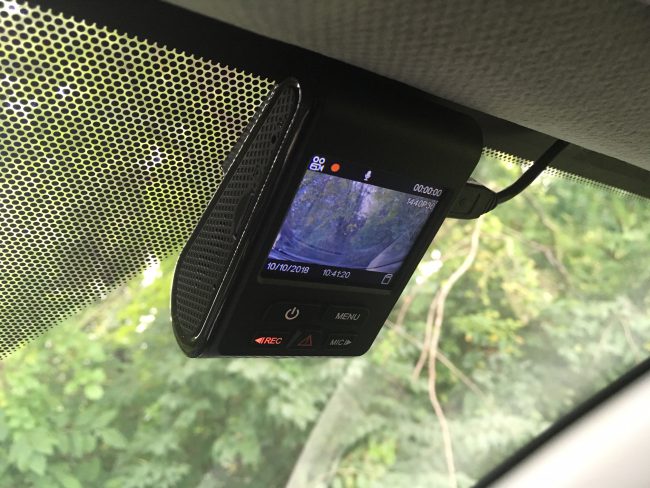
With the easy things out of the way, I turned to what would be the most difficult part of my day – driving lights. I opted for a kit from Spec-D Tuning that included mounts, clear driving/fog lights with bulbs and all the electrical parts that I found at Walmart.com for just $65.95. The kit itself is a complete package and you can see from the pictures at the bottom of this article that he result looks like a 100 percent factory addition. The install, however, was a major pain in the ass.
To begin with, I had to remove the entire front fascia from the car, much of it secured by the sorts of finicky plastic clips that I have come to hate over the years. Since I didn’t have whatever special tool the factory might use, I took my time and was as gentle as possible with a small screw driver and a pair of needle nose pliers. To say there were a lot of clips would be an understatement. It took about two and a half hours to get everything removed but, fortunately I managed to get the front off of the car without breaking anything.
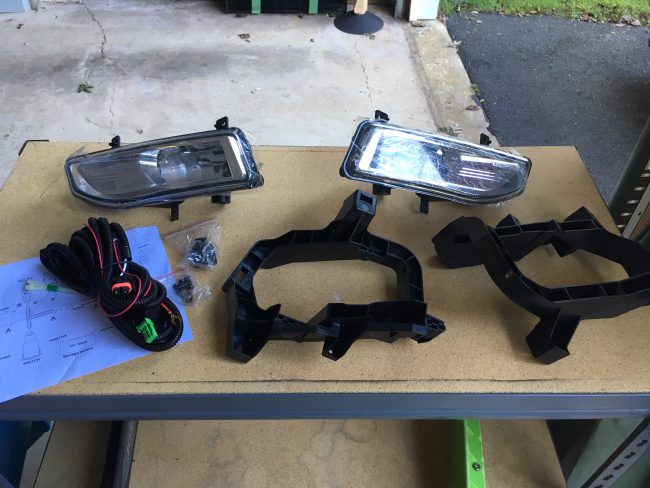
The install was no easier. To begin with, the pile of parts I had received were a jumble of different shapes and looked like an unsolvable puzzle. Nothing looked like it would fit with what I had. The lights were the right shape, but bigger than the blanks I had popped out of the mounts and for a moment I had visions of me with a cutting wheel making everything work. But after looking at it for a while, I noticed a clip on the backside of the fascia that seemed to fit the mount and, when I matched those two pieces up, everything else just fell into place.
The lights suddenly fit into the mounts. The mounts matched up to the back of the fascia via the aforementioned clips and a couple of bolts provided in the kit, and the too-large lights mated up to the back of the holes in a way that, while still too large from the back, looks perfectly normal from the outside. The kit worked perfectly with absolutely no modifications required. The wiring harness, too, went right together and after I had the wires run the way I wanted them I had the whole font put back onto the car without any issues in about an hour.
But then I hit a roadblock. The wiring needed a place to run through the firewall and there was just no way I could see that might make it work. In the old days, that would have been the easy part of this whole operation. I’d have found a grommet with wires running through it, added this one new wire to the bundle and been home free, but the Note is just too compact of a package to allow me this simple fix. The wiring bundle was wrapped tight and it passed through the fire wall into the car’s cabin somewhere behind the engine in a place that I just couldn’t access.
After pondering the situation for a while, I decided the solution was to route the wire alongside the hood latch cable, which actually runs from the engine bay through the fender, briefly into the wheel well and enters the cabin via a point behind the inside fender liner. Although it sounds simple, getting it through required all my skills as a good, old fashioned wire-fisher but with time and more patience, I got it done. Once I was on the inside, I connected the final wire, slipped the switch into the stock position and plugged in the socket from behind. The result looks entirely factory and the switch even lights up to let me know when driving lights are on. Total time spent, between 5 and 6 frustrating hours but the end result looks great and works well.
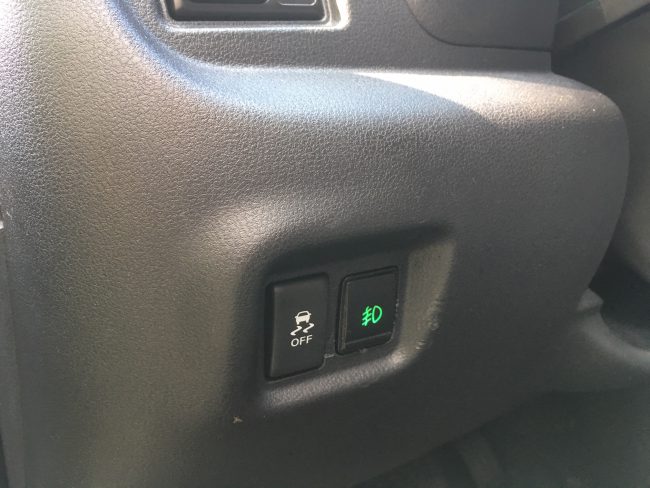
And that’s where the additions to our new Nissan will end. No aftermarket radio, no bass tubes, no spoilers, no ski racks, no neon kits and no whatever else is out there. We just wanted a few extra things to make the car more user friendly and, with the exception of the driving lights, our additions were easy to install. The whole thing was a rousing success and the little car is just that much nicer for the things I have done. The best part is, even though everything already worked, I actually did, for once in my life, manage to “fix” something without making it worse. I should probably go buy a lottery ticket while I’m on a roll.
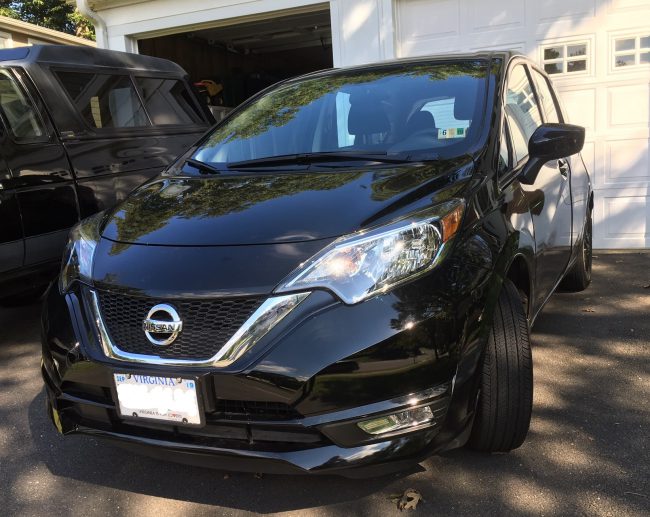
Just for the record, I chose all the items I used on my own and purchased them with my own money. No promotional deals were struck and I don’t expect any sort of reimbursement from the manufacturers. I’ve given you the names and prices of the actual products as a point of reference and if they sucked I’d have told you straight up.







23 Comments
As one who’s newest car is 34 years old and is closing in on 450,000 miles, I can tell you that the old redneck mantra of ‘if it isn’t broke, fix it until it is ! ‘ .
Rings true to me, I just sent you a thing about teaching my self turbocharger wastegate repairs , I love to tinker and can almost always figure out how it works and how to repair/adjust it whatever it might be .
-Nate
I admire someone of our age (I just entered the Sedate Sixties) who still has the patience for this.
Back when I was a young, broke redneck with a true rarity, a rust-free ten-year-old Pinto (bought in Texas; took north to Ohoho; German 2.0 and four-speed made the driveline indestructible) that I just HADTA “fix”…I snaked wires through the dash for headlight relays (Cibie Z-Beams with 100-watt hi-beams) and a manual choke (having spent most of my adult life up to then, operating equipment, I had no patience for balky Mickey-Mouse automatic chokes). Power taps from the battery for the cheap aftermarket stereo, to eliminate ignition buzz. Aux headliner lights in the back (it was a wagon and I camped in it – I ache now, just thinking about it).
Fast-forward to today. When I had auxiliary lights added to my now-departed Tacoma, I spent a hundred for a neat, fast, professional installation. And…this summer I scored, I thought, a bargain of a motorcycle. A Honda Pacific Coast – the Plastic Fantastic; the whole body covered with scooter-like cladding. But it was a smooth runner…just needed a new thermostat.
And, as it turned out, a carb rebuilding. Ran fine in town; but in our region, the roads go up and down 2000 feet or more. A flame-out on Mullen Pass had me awkwardly rolling the dead bike on a busy state highway, until I got low enough that it would again run.
All that was needed, was for the siamesed carbs and the thermostat housing, to come out.
All that was needed for THAT, was, big sheets of plastic cladding, bolted in places, press-fit with grommets in others; and interlocked in still others.
All that was needed for THAT, was, a shop; six metric hex-head drivers…patience and luck to not break anything.
After three weekends, I gave up. It was doable, for someone with a lift and a shop and a lot of finesse and patience. And this was before even starting on the carb cleaning.
I sold my great buy, at an even-lower price. Ouch…much as I wish I still could, I can’t do that stuff anymore.
The Farmer fixing (AKA ‘Redneck Engineering’) tends to either teach one patience or to give up and pay someone else to do it, once in a while they’ll do things right, most of the time not .
As soon as I discovered fixing 1930’s tractors and WWII & Korean conflict equipments both taught me new things as well as getting me away from shoveling shit & pulling tits, I was off to the Barn never to be happy in the field / cow barn again .
I’m betting you learned a lot being a Red Neck, not a bit os shame in it to me .
90 + % of the repairs I do, involve undoing others mistakes or plain old butchery .
I actually had fun attacking that old Dodge Monday, I paid dearly though ~ it’s Thursday and I’m just now able to get up and about, just in time for my delayed treadmill coronary stress test.
Being idle is nice but a fast path to an early grave ~ just walking the dog or whatever will ease the load on your heart more than you can imagine .
Carry on, life is a precious gift not to be wasted, not a moment of it .
-Nate
Mullan Pass, are you in Idaho? Not far from me. 🙂
The driving lights look surprisingly OEM, nice job there.
Yeah, seconded – that is indeed a nice, clean install on the lights.
I ran into similar issues when attempting to run wiring from a forward-facing camera to the head unit in my Econoline van. Lacking an obvious route through the firewall (it’s not clear that there is firewall – I’ve never seen it), I went behind the grille, behind the fender, and then through a grommet behind the kick panel. It was an easy path, and one that I’ll take again when it’s time to install additional forward lighting.
I like what you’re doing here. Laying claim to the TK moniker here on riverside green. Freezing out Tom Klockau. Power move. Respect.
I’m working on building a Thunderdome in my backyard. Break a deal, face the wheel!
Imagine that, me being invited to your house! And where there is a Thunderdome, there is BBQ.
And chain saws, single jacks and CARNAGE ! .
I hope there’s non alcoholic cold beverages for the drunks who are lucky enough to get invited =8-) .
-Nate
Nice work. I added yellow fog lights to my 2012 Accord EXL, mounted in the (narrow) lower grill. The wiring already exists for the OE fog lights that come with a V6 model. I made my own harness, bought a factory switch/stalk for $25, and everything integrates nicely.
I’m surprised Nissan doesn’t have a similar setup for the Versa, as it seems manufacturers are trying to minimize the differences between models under the skin.
Even on our GX, I can add a few off road features such as crawl control (versus hill descent control) with just a switch and a re-flash of the computer. Same with the front grill, and side mirror, cameras.
I was surprised these additional lights weren’t plug and play as well, but there was nothing I could find, not even any empty clips where the wiring might have been routed, that indicated Nissan had some sort of universal setup.
I thought it was interesting, too, that the kit I purchased was make, model and year specific and that it anticipated every part and piece that I might need. My guess is that if Nissan had pre-installed the wiring on all their cars, the kit would have been set up to plug into that. Overall, I am really satisfied with the product they provided and the results look 100 percent stock. They work well, too, and cast a bright, wide, low-level beam that lights up the whole road without blinding oncoming traffic. Top notch stuff, in my opinion.
That install, though, was difficult. What I thought would take a couple of hours in the morning ended up killing my entire Saturday. It’s fortunate that my DIY skills have finally gotten to the point where I can do this sort of thing with running into real trouble. I gotta say though, I freaked out when I finally had the front of the car off and couldn’t figure out how everything fit together. The instructions were geared more towards the wiring than the mounting and I was scratching my head there for a while.
I relate. Audio, lights, suspsension, bolt-ons, etc.
I’m older and wiser now. Or lazier and more of a cheapskate. One or the other.
I’m glad I picked up the skills on the way, though.
You just think those added lights don’t blind the unfortunate oncoming drivers. I hate those extra lights with the passion of a thousand suns.
You just think your passion doesn’t blind other drivers.
some are better in that regard than others. i think a courteous driver uses them in moderation.
Actually, one way or t’other there’s always a way to adjust them so they don’t blind everyone .
It’s called doing the _whole_ job, not just slapping on extra lights and calling it a day .
I use Hella H4 bulbs in my headlights, *very* bright @ 65 watts and being made in Germany they’re incredible with the low beam cut off ~ look into it, the non DOT rated ones will never blind anyone except on high beams setting .
I also take the time to properly adjust my driving / fog lamps, most don’t realize that high beams reduce forward vision in the rain / fog because they reflect off the water in the air…..
This makes it harder to see the dim taillight of the cars ahead you’re about to plow into .
-Nate
“some are better in that regard than others. i think a courteous driver uses them in moderation.” .
BINGO .
Also, a good driver keeps an eye on the rear view and always moves right when another vehicle is coming up behind, no need to wait until they’re on your bumper, just get the fuck out of the way .
-Nate
It’s not exactly clear to me how my being willing to move over on the interstate for drivers traveling faster will protect my retinas from the idiots coming toward me on residential streets with a speed limit of 25 MPH, with a street light every 200 feet or so, who insist on using every light on the front of their car, including “fog” lights when it’s clear, and “driving lights” and god only knows what else. It’s ten times worse if the pavement is wet.
As far as I am concerned, unless you are driving at high speed on an unlighted road without oncoming traffic, if you would be unable to see where you’re going with standard sealed beam low beams you are going too damn fast.
It doesn’t seem that anyone is aware any more that the human eye has this thing called the iris. When exposed to bright light it contracts. What this means at might is that if you expose another driver’s eyes to excessively bright lights, either your flamethrowing headlights or your 2 foot square enormous zillion candlepower tail lights, his irises will contract and it will become more difficult to distinguish objects less brightly lit. At this point in history no one seems to be able to conceive any solution to this except MOORRREEE LLIIIIGGGHTTT!!!!! till the whole freaking town is lit up so bright you can read the classified ads at midnight – and you still can’t see anything!
Just once I would like to make these so-called lighting designers go on a camping trip in the woods with no flashlights. If you will just keep your cotton picking hands off the light switch and let your eyes adjust, you can see quite well indeed with only star light.
Most of the time the solution, unintuitively to those who are not familiar with the anatomy of the eye, is actually less light, so the contrast between – say – the taillights of the car ahead – and – say – the curb, is less, so you can actually have a hope of seeing the thing that is not lit with the light of the destroyer of worlds.
Once again, this emphatically does not apply to driving at high speed on unlighted roads without oncoming traffic. However, for most people that is only a very small fraction of total night time driving.
Fair enough .
I did say that all lights need to be properly adjusted, few ever bother and i have the same issue of being blinded often by on coming idiots .
-Nate
I have to join in on your condemnation of folks who feel that EVERY damned light on the front of their car has to be on once dusk approaches, If you drive the same route everyday like I do, you can see the same five or six clowns who have all their lights on, hell or high water.
My oddly optioned Pontiac does not have fog/driving lights, but I have never had an issue seeing in the fog or drizzle with the standard headlights. I fantasize about putting high wattage H9s in the car to truly blind the a$$holes driving around with their badly aimed headlights…
Surprisingly, the best headlights that I ever had were the ones on my Yugo. The low beams threw a nice pattern and the high beams illuminated the road ahead without seemingly blinding the oncoming traffic. Laugh all you want, those early 70’s Fiats were pretty well engineered, IMO.
nice writeup. i get a real sense of satisfaction doing even simple repairs on my van. i’ve been thinking about adding road lights and a dashcam on my van but they are way down on my list. i did do the phone mount. mine uses a suction cup to the windshield and a short usb to the radio. the side benefit is that i can also play my music from the phone through the car stereo and use the phone in hands free mode to answer calls in my pre bluetooth vehicle.
i was out doing my humble curbside repairs on manhattan’s westside highway yesterday. the joys of city life. i decided to replace my spark plugs and wires. the last time i did this myself was on my dodge dart in the early eighties. after studying various videos on the tube (chis fix is awesome but scotty kilmer rules), i was about to order a socket for my vw’s 21mm plugs. for the hell of it, i dug through the closet and found the old made in usa craftsman socket from my dodge. well it turns out that 13/16 inch is 21mm. bingo! what should have been a 30 minute job took me 2 1/2 hours but in the end the old vw van purrs like a kitten (sort of).
Which era of vw van do you have?